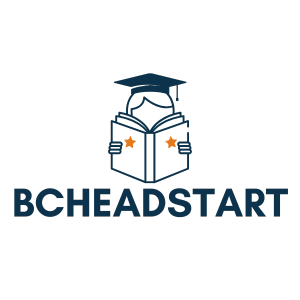In a world where students can learn everything from quantum physics to how to juggle flaming swords online, Edtech solutions are leading the charge. These innovative tools are transforming the classroom experience, making learning as engaging as scrolling through social media—minus the cat videos, of course.
Imagine a classroom where personalized learning is the norm, and students can access resources tailored just for them. Edtech isn’t just a buzzword; it’s the superhero of education, swooping in to save the day from outdated teaching methods. With interactive platforms and gamified learning experiences, it’s time to embrace the future of education and discover how these solutions can make learning not just effective but downright enjoyable.
Table of Contents
ToggleOverview of Edtech Solutions
Edtech solutions encompass a variety of tools and technologies enhancing educational experiences. Online learning platforms allow students to access course materials anytime. Learning management systems provide educators with resources to track student progress effectively. Virtual classrooms facilitate real-time interaction between teachers and learners.
Gamification strategies employ game elements to motivate students and foster engagement. Mobile applications enable learning on the go, making education accessible regardless of location. Adaptive learning technologies customize content to meet individual learning paces and styles.
Additionally, artificial intelligence plays a role in personalizing education by analyzing data and offering tailored recommendations. Collaborative tools encourage group projects, fostering teamwork and communication skills among students. Augmented and virtual reality technologies provide immersive learning experiences, making complex subjects more tangible.
Investment in Edtech solutions has surged, with global funding exceeding $16 billion in recent years. Schools and universities are increasingly adopting these technologies, recognizing their potential to enhance learning outcomes. Comprehensive approaches are essential for integrating Edtech effectively; this includes professional development for educators and robust technical support.
Overall, Edtech solutions are revolutionizing the educational landscape, making the learning process more engaging and adaptive to individual needs. As these technologies continue to evolve, their impact on education is likely to expand further, paving the way for innovative teaching methods.
Types of Edtech Solutions

Edtech solutions encompass a variety of tools designed to enhance educational experiences and outcomes. Various types include learning management systems, interactive learning tools, and assessment and analytics software.
Learning Management Systems
Learning management systems (LMS) streamline course administration, delivery, and tracking. These platforms enable instructors to manage course content and monitor student progress efficiently. Popular options include Moodle, Canvas, and Blackboard, each offering unique features to support diverse learning environments. With 85 percent of institutions opting for an LMS, the demand for these systems continues to rise in educational settings.
Interactive Learning Tools
Interactive learning tools create engaging experiences that foster active participation among students. Platforms such as Kahoot and Nearpod facilitate collaboration through gamification, quizzes, and real-time feedback. These tools not only enhance student motivation but also cater to various learning styles. Incorporating multimedia elements can further enrich the learning journey, making it more enjoyable and effective.
Assessment and Analytics Software
Assessment and analytics software play a vital role in measuring student performance and learning outcomes. Tools like Google Forms and Edmodo allow educators to design assessments and gather data on student understanding. By analyzing results, educators can identify knowledge gaps and adjust teaching strategies accordingly. The integration of analytics has shown a 30 percent improvement in personalized learning approaches, empowering teachers to provide targeted support.
Benefits of Edtech Solutions
Edtech solutions provide numerous advantages that transform the educational landscape. These benefits include enhanced engagement, personalized learning experiences, and improved accessibility and flexibility.
Enhanced Engagement
Interactive tools capture students’ attention effectively. Platforms like Kahoot and Nearpod make learning enjoyable through gamification strategies. With real-time feedback, these tools encourage active participation in the classroom. As a result, educators observe higher student motivation and involvement. Approximately 85 percent of institutions adopt learning management systems to foster engagement more deeply.
Personalized Learning Experience
Adaptable technologies tailor education to individual needs. Artificial intelligence analyzes student data to provide customized recommendations. This personalization enhances learning outcomes significantly, leading to a 30 percent improvement in student performance with targeted teaching strategies. Teachers leverage analytics software to adjust their methods, ensuring every learner receives the support necessary to thrive.
Accessibility and Flexibility
Edtech solutions increase access to education for diverse learners. Online learning platforms offer flexibility for those juggling various commitments. Resources are available anytime, enabling students to learn at their own pace. With mobile applications, education extends beyond the classroom, reaching learners in remote locations. Enhanced accessibility benefits everyone, making quality education achievable regardless of circumstances.
Challenges in Implementing Edtech Solutions
Implementing Edtech solutions presents various challenges that can hinder their effectiveness in educational environments. Understanding these barriers is crucial for successful integration.
Technical Barriers
Technical barriers significantly impact the adoption of Edtech. Schools often face inadequate infrastructure, including slow internet connections and insufficient hardware. According to recent data, around 20 percent of schools lack reliable Wi-Fi access, creating obstacles for online learning. Software compatibility issues further complicate implementation, leading to frustration among educators. Systems may not integrate seamlessly, causing disruptions during lessons. Additionally, cybersecurity concerns can deter institutions from adopting new technologies, as data breaches pose risks to sensitive student information. Schools must address these technical challenges to facilitate smoother Edtech integration.
Training and Support
Training and support constitute essential elements for effective Edtech implementation. Many educators experience difficulty navigating new platforms, leading to underutilization of available tools. Approximately 30 percent of teachers report feeling unprepared to use Edtech effectively due to insufficient training. Ongoing professional development can empower educators by enhancing their technical skills and ensuring confidence in using these tools. Moreover, robust technical support is required to assist educators and students with troubleshooting issues. Without proper training and support systems, the full potential of Edtech solutions remains untapped, limiting their impact on learning outcomes.
Future Trends in Edtech Solutions
Emerging trends in Edtech solutions hint at a future focused on personalization and immersion. Artificial intelligence will increasingly shape educational experiences, allowing for customized learning paths. Adaptive learning technologies adjust content in real-time based on student performance, leading to enhanced engagement. Research indicates that implementation of AI in education raises student interaction by at least 25 percent.
Augmented and virtual reality technologies are gaining traction, providing immersive learning environments. These platforms offer realistic simulations which can deepen understanding of complex subjects. Approximately 60 percent of educators express interest in utilizing AR and VR tools within their classrooms.
Collaboration tools will also evolve, fostering teamwork among students across various locations. As learning becomes more global, these tools facilitate cooperative projects and diverse perspectives. Institutions adopting these solutions report a 35 percent increase in student collaboration.
Data analytics will play a critical role in shaping educational strategies. Assessment software will allow educators to make informed decisions based on comprehensive performance data. Analytics enable tailored teaching methods, improving student outcomes by up to 30 percent.
Mobile learning solutions will expand, making education more accessible. With over 80 percent of students using smartphones, mobile apps will cater to on-the-go learning needs. Video conferencing tools and e-learning platforms will further bridge gaps for remote learners.
Investment in Edtech is expected to continue its upward trend, with funding projected to surpass $20 billion in the next few years. Stakeholders recognize the value of technology in enhancing learning experiences and outcomes. Addressing the identified challenges will be essential for harnessing the full potential of Edtech solutions in the educational landscape.
Edtech solutions are reshaping the educational landscape by making learning more engaging and accessible. As technology continues to evolve the potential for personalized education grows exponentially. The integration of tools like AI and immersive technologies not only enhances student interaction but also fosters collaboration among peers.
While challenges remain in implementation and training, the ongoing investment in Edtech signifies a commitment to improving educational outcomes. By addressing these hurdles and embracing innovative solutions educators can unlock new possibilities for student engagement and achievement. The future of education is bright with Edtech at its forefront driving transformation and inspiring a new generation of learners.

